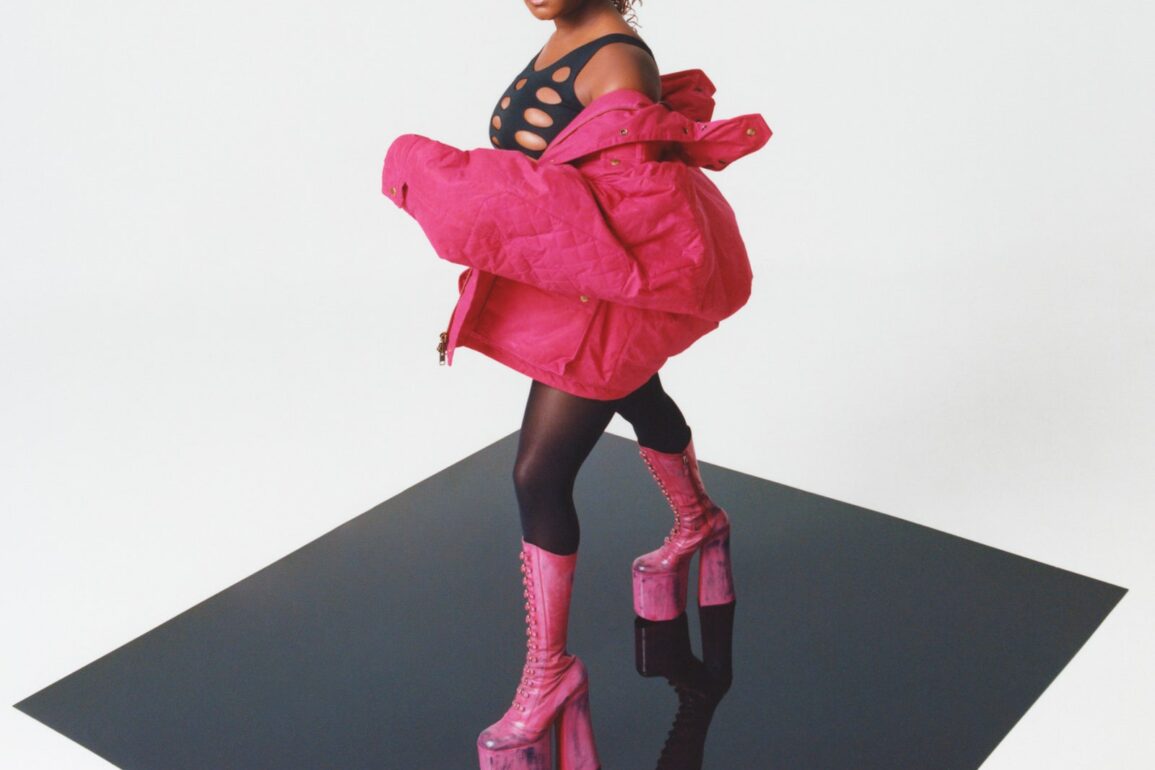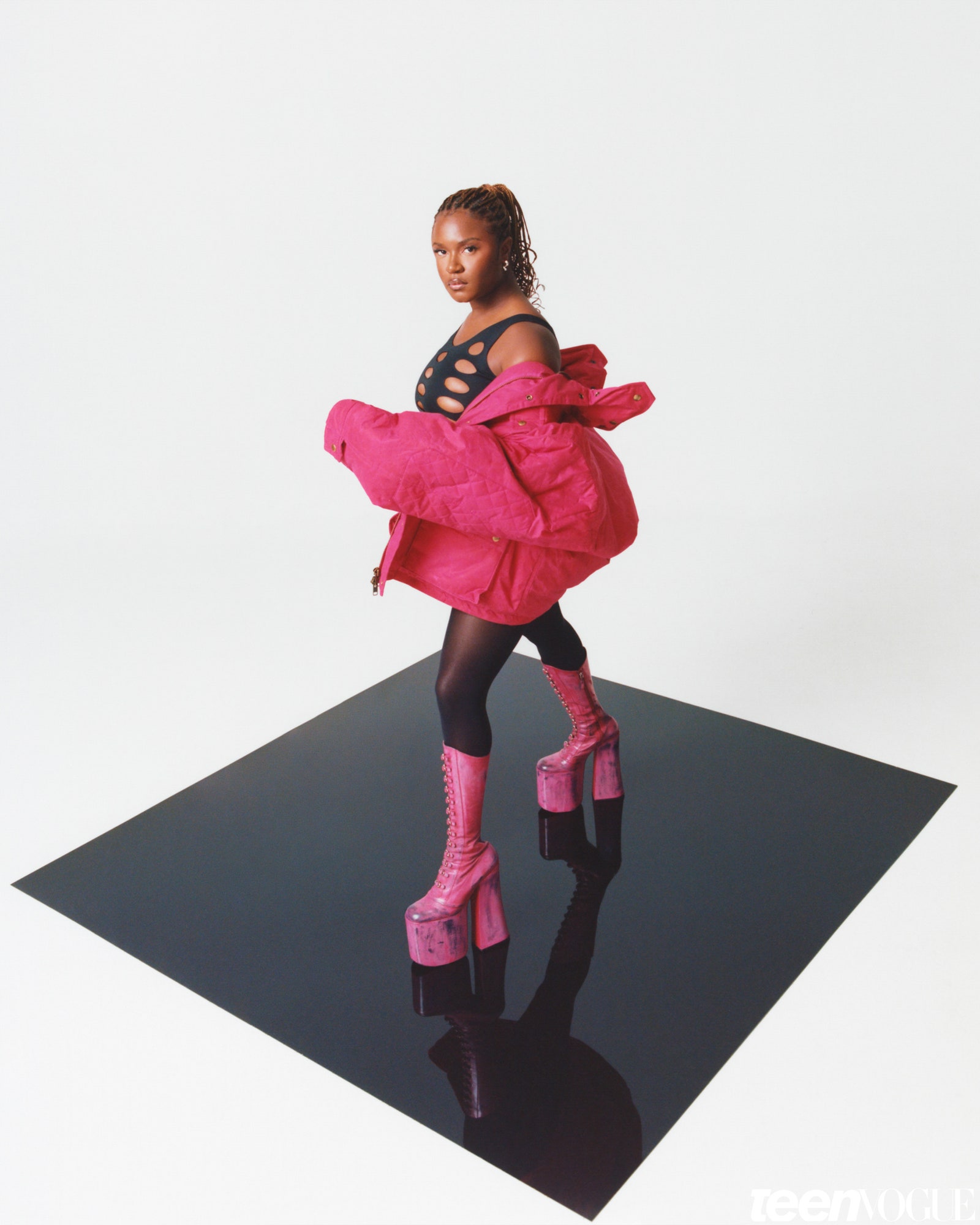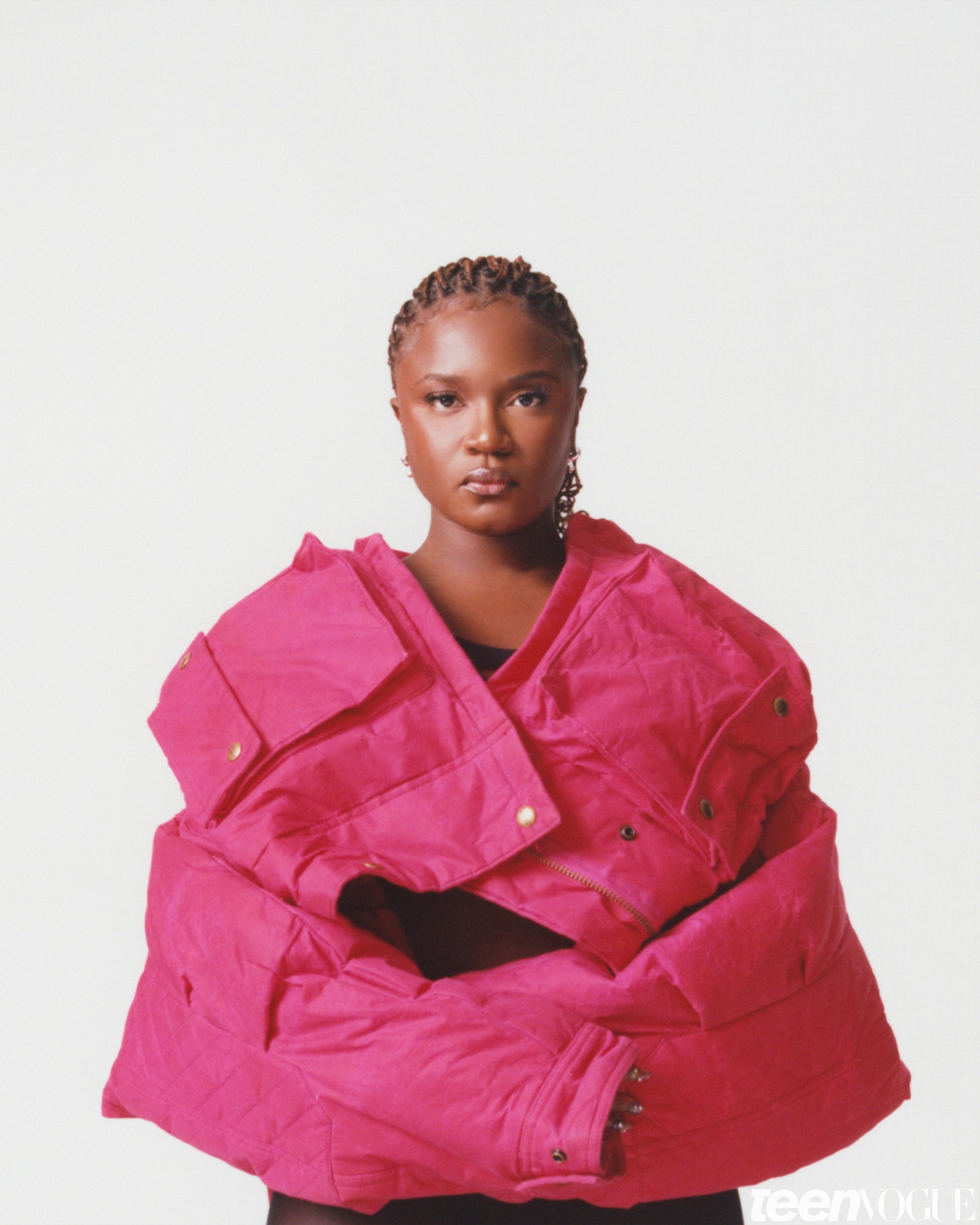Across Amaarae’s visual identity and music, the 2000s take precedence in her multidimensional world. “What stands out about the 2000s is the value and quality of entertainment, especially its significance to young Black people,” she notes.
“Think of iconic figures like Raven-Symoné, Destiny’s Child, TLC, and many more,” she continues. “The styling and representation of Black individuals during that time was exceptional. Young Black women, men, and teenagers were portrayed in the best possible light. Shows like One on One, with Kyla Pratt, left a lasting impression on me.”
With longevity in mind, Amaarae holds onto the energy of the 2000s and plans to carry it throughout her visuals, including videos for “Reckless,” “Sweet,” and “Co-Star.”
Amaarae’s aim is simple: to produce quality work without rushing her creative output. “I want to flaunt Black people looking good and feeling good. Unfortunately, it feels like we’re losing that essence. The vastness of the internet has led to a lack of quality control. Artists are no longer being developed over several years, like in the past.”
For example: “Erykah Badu spent years performing in clubs before releasing her debut album in 1997. She captivated audiences with her voice and stage presence. We’re missing that level of dedication and growth today,” she says.
“Three individuals come to mind,” says Amaarae, naming in record time the pop artists who have inspired her. “Britney Spears, Michael Jackson, and Janet Jackson. What sets them apart is their distinct, unique voices. They have the remarkable ability to explore a wide range of styles, energies, and sounds, thanks to the mastery of their own voices. That plays a significant role in pop music.”
The second crucial aspect of pop for Amaarae is a willingness to take risks and push boundaries. “It’s about going to great lengths to demonstrate to oneself and the audience that they are more than people perceive them to be,” she says.










